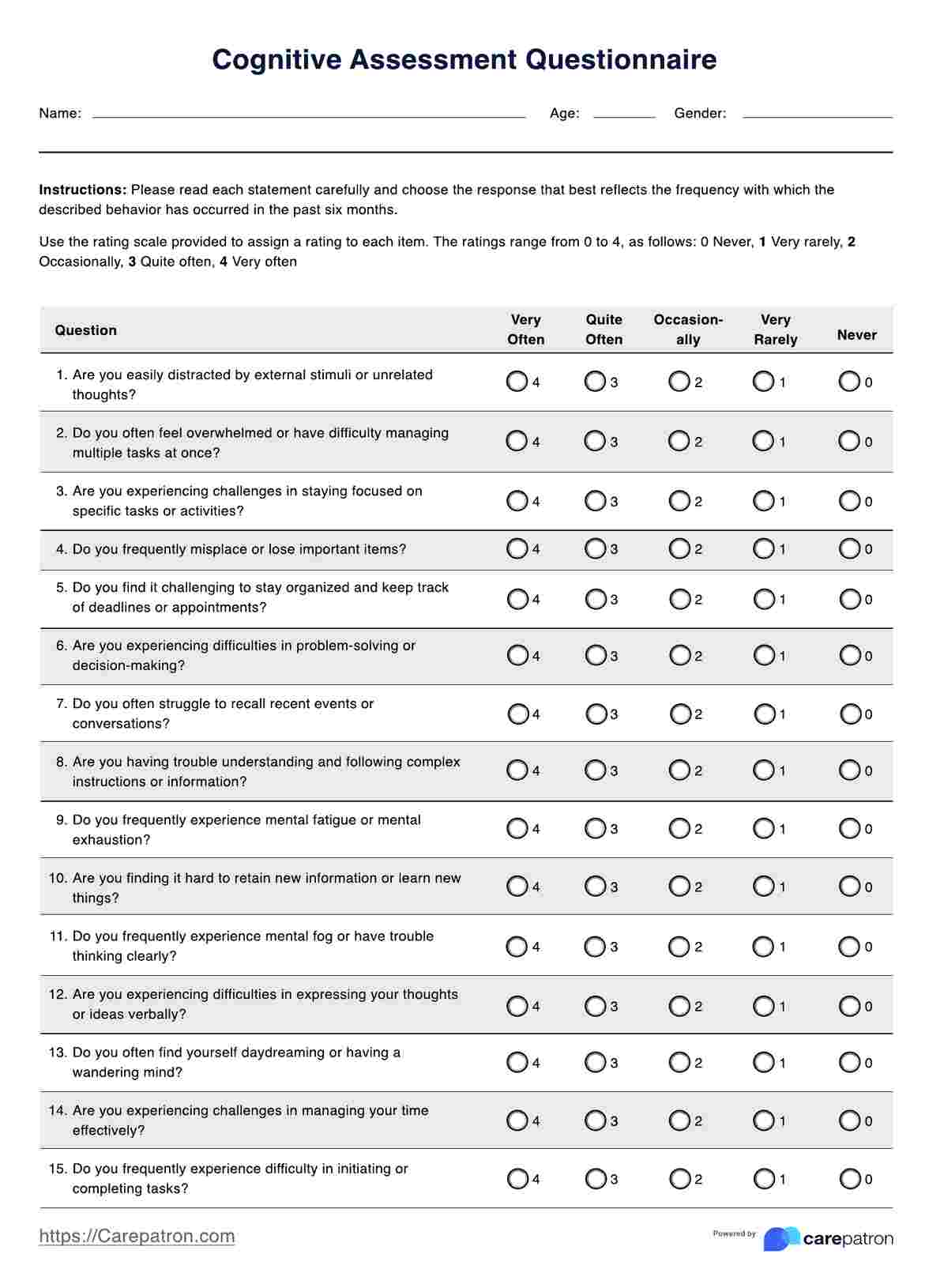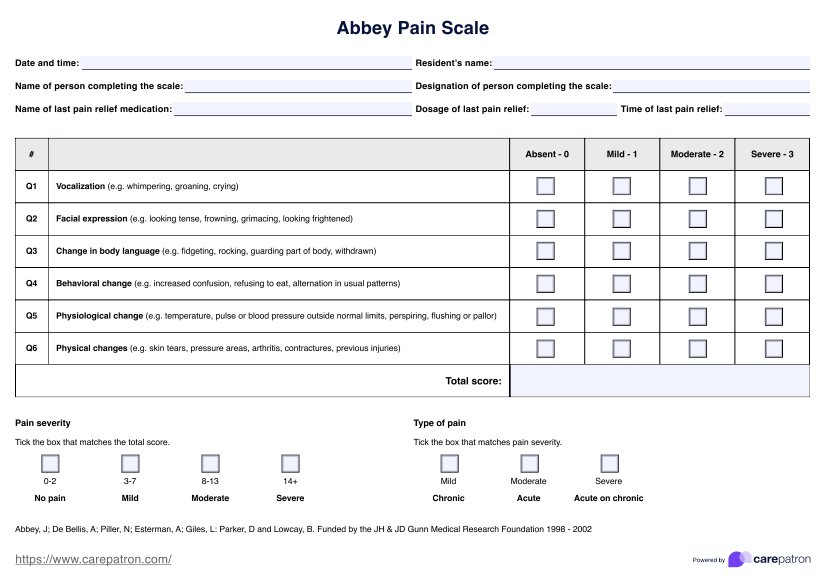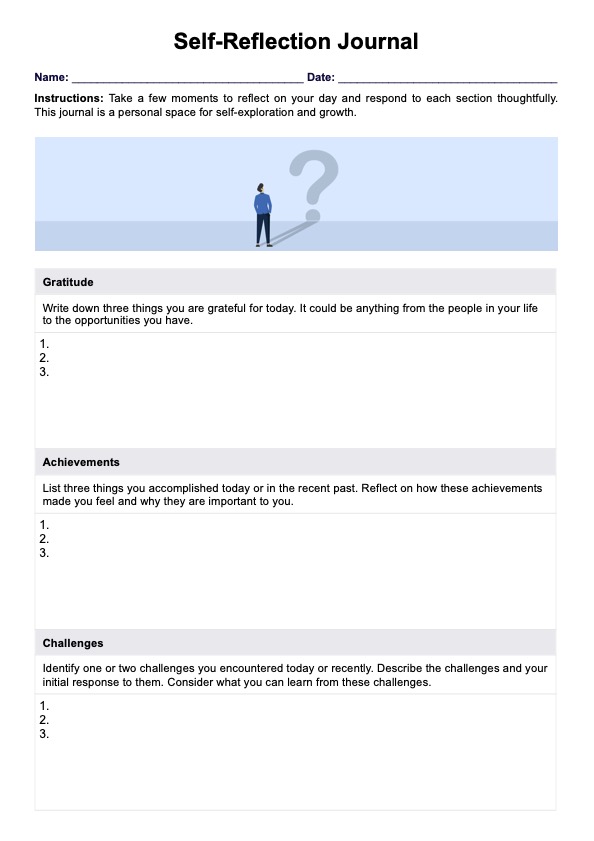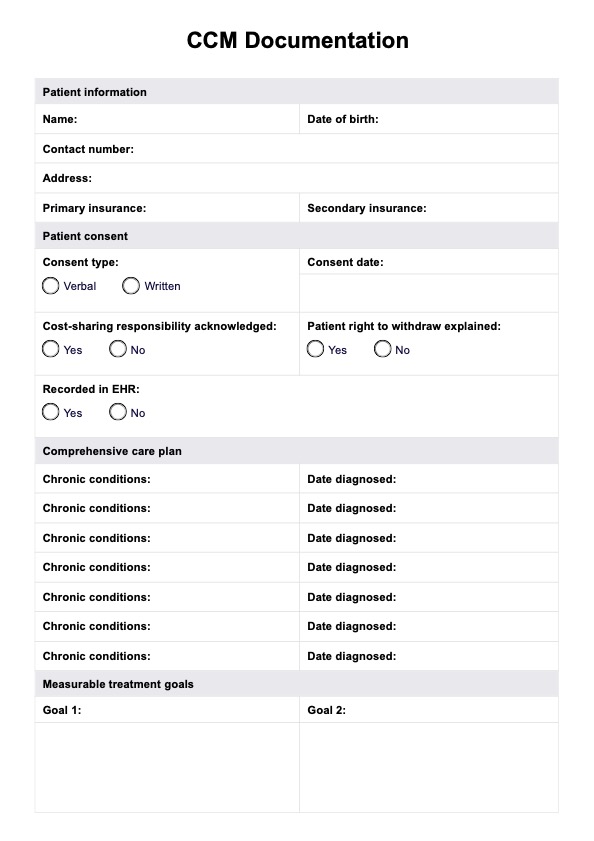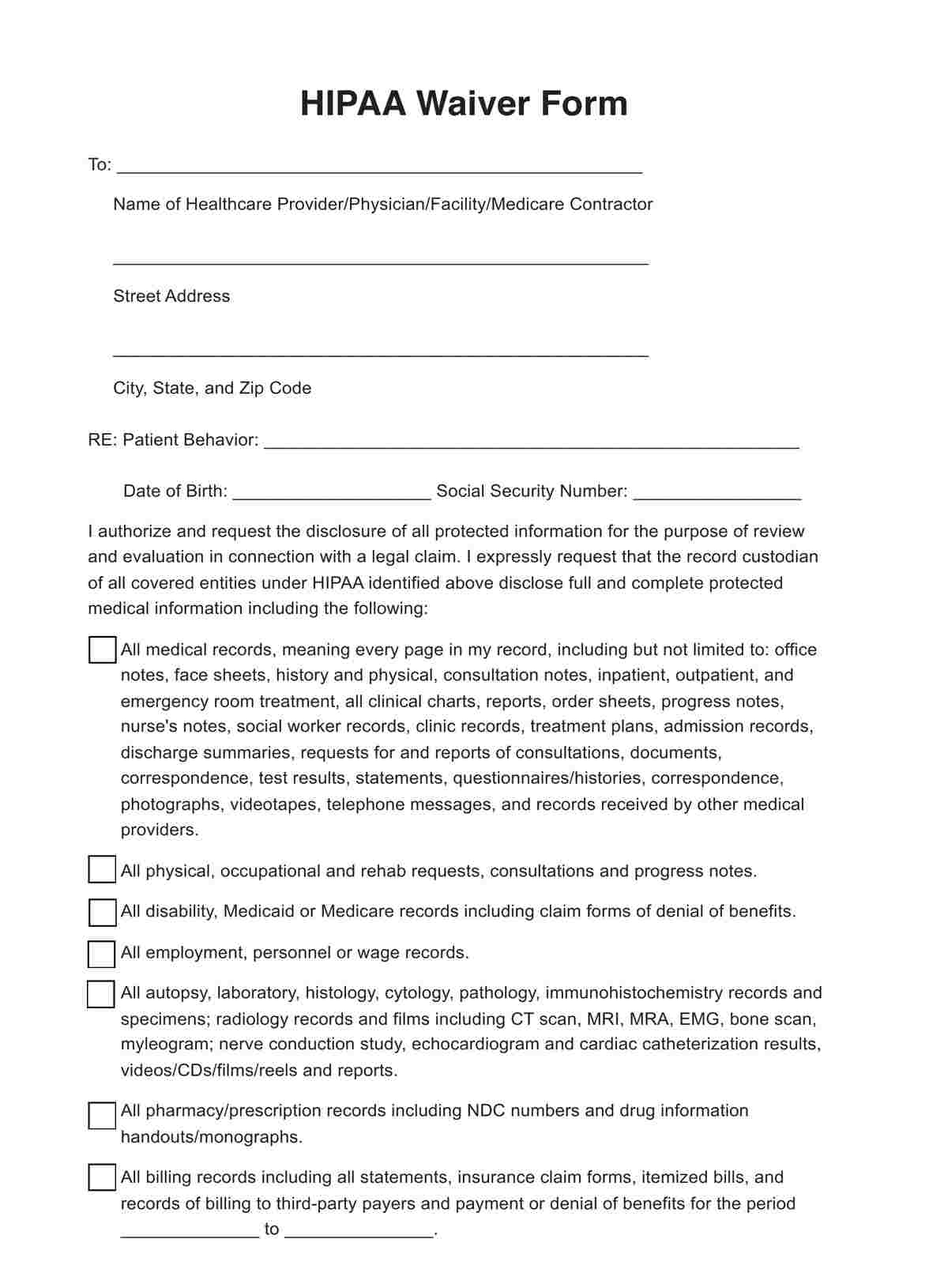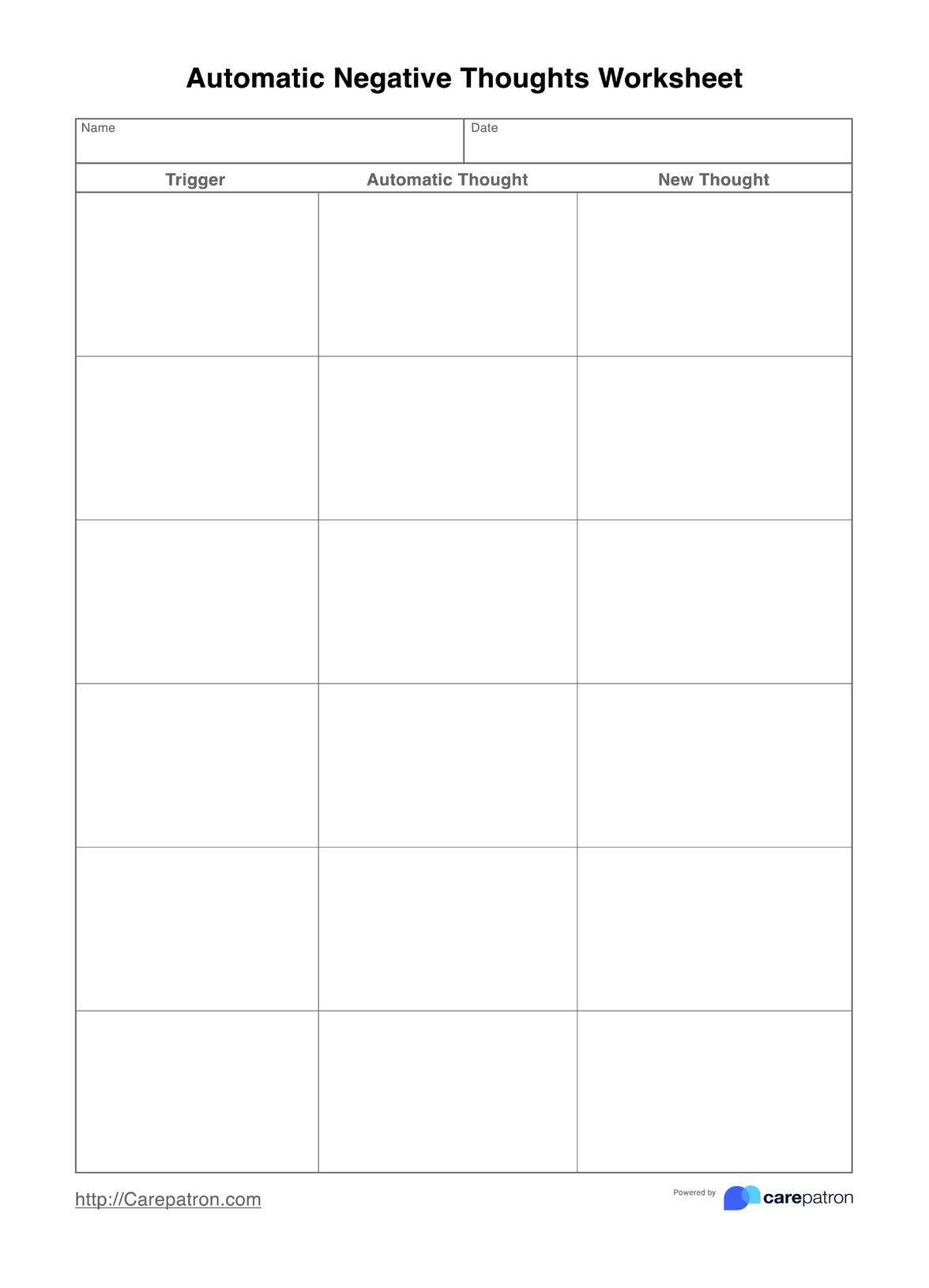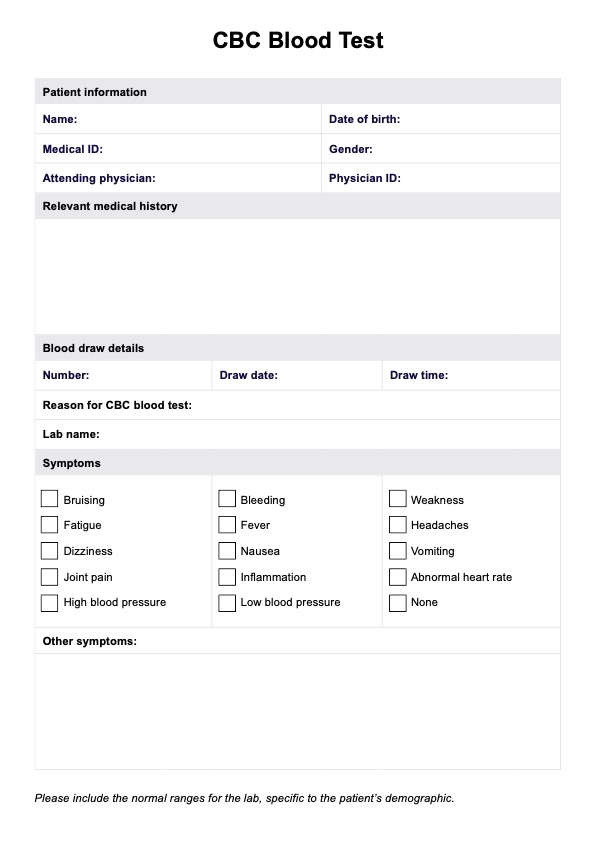Emetophobia Questionnaire Template
Seeking a trusted emetophobia assessment tool? The Emetophobia Questionnaire offers precise insights. Optimize mental health practices today!


What is Emetophobia?
Emetophobia is the fear of vomiting, encompassing anxiety surrounding one's own or others' vomiting. This anxiety disorder often leads individuals to avoid situations linked to nausea or vomiting. More prevalent in women, emetophobia can cause significant distress, impacting daily life and social interactions.
The Emetophobia Questionnaire, also called an emetophobia quiz helps to gauge the severity of emetophobia symptoms. Developed to assess specific fears and behavioral patterns related to vomiting, the questionnaire includes items on avoidance behaviors, anticipatory anxiety, and the impact on overall well-being. Individuals rate their experiences on a scale, providing insights for tailored interventions.
Administered by professionals, the emetophobia questionnaire aids in understanding and addressing the unique challenges posed by emetophobia, guiding therapeutic strategies to alleviate distress and improve the quality of life for those grappling with this specific phobia.
Emetophobia Questionnaire Template
Emetophobia Questionnaire Template Example
How is the Emetophobia Questionnaire conducted?
The Emetophobia Questionnaire, often referred to as the emetophobia quiz, is conducted to assess the severity of symptoms related to the fear of vomiting. Individuals are asked to respond to a set of questions that cover various aspects of emetophobia, including the fear of vomiting oneself or witnessing others vomit.
The questionnaire evaluates behavioral responses, such as avoidance of certain foods, places, or discussions related to vomit. Participants rate their experiences on a scale, indicating the frequency or severity of their reactions. Impact on daily life, health implications, and overall satisfaction with life are also assessed.
Participants provide information about seeking professional help and their current treatment status. The aim is to gather comprehensive data to understand the extent of emetophobia and tailor interventions accordingly. Administered by qualified professionals, the questionnaire plays a crucial role in guiding cognitive-behavioral therapy and treatment plans for individuals dealing with emetophobia.
How are the results of an Emetophobia Questionnaire interpreted?
Interpreting the results of the Emetophobia Questionnaire involves analyzing responses across various sections. For the Emetophobia Severity Assessment, higher scores indicate more severe fears related to vomiting, helping professionals understand the extent of phobic reactions.
Behavioral Responses reveal the frequency of specific actions linked to emetophobia, with higher scores indicating more frequent behaviors. The Impact on Daily Life section gauges how emetophobia affects daily activities, work, and enjoyment, providing insights into the overall impact on well-being.
Health Implications assess the association between OCD symptoms and the physical impact of stress, helping identify related health concerns. The Seeking Help section reveals the individual's current treatment status, guiding healthcare professionals in offering appropriate interventions.
Lastly, the Quality of Life section assesses overall life satisfaction on a scale of 1 to 10. A thorough analysis of these results informs tailored strategies to alleviate the impact of emetophobia, improving the individual's overall quality of life.
When are the best times to use an Emetophobia Questionnaire?
The Emetophobia Questionnaire proves versatile, offering valuable insights at various stages of the treatment journey. Here are the best times to use it:
When seeking treatment
The Emetophobia Questionnaire is most effective during the early stages of seeking treatment for emetophobia. It aids in identifying symptoms, allowing for timely intervention and tailored therapeutic strategies.
Treatment progress monitoring
Regularly using the questionnaire during therapy sessions helps monitor treatment progress. It provides insights into changes in fear levels, behavioral responses, and overall well-being, enabling healthcare professionals to adjust interventions accordingly.
Post-treatment evaluation
Following a course of treatment, the questionnaire is valuable for assessing the effectiveness of interventions. It gauges the extent of symptom reduction, helping individuals and professionals evaluate the overall success of the treatment plan.
Long-term maintenance
Even after successful treatment, periodic use of the questionnaire ensures ongoing management. It helps detect any resurgence of symptoms, allowing for proactive measures to maintain mental well-being.
In clinical research
The questionnaire is a valuable tool in clinical research studies on emetophobia, contributing to a better understanding of the condition and informing future treatment approaches.
What are the benefits of using an Emetophobia Questionnaire?
Here are some of the many benefits the Emetophobia Questionnaire offers:
Identifying symptoms
The Emetophobia Questionnaire facilitates early detection of emetophobia symptoms, enabling prompt intervention. It helps individuals and healthcare professionals address fears and anxieties before they escalate.
Tailored treatment planning
Informed Interventions: By assessing severity and behavioral patterns, the questionnaire aids in developing tailored treatment plans. It provides valuable insights into the specific aspects of emetophobia that need attention, optimizing therapeutic interventions.
Monitoring treatment progress
Throughout therapy, the questionnaire is a dynamic tool for monitoring treatment progress. Regular assessments allow for intervention adjustments, ensuring they align with the individual's evolving needs.
Assessing various dimensions
The questionnaire covers a spectrum of dimensions, from fear severity to daily life impact. This comprehensive evaluation provides a holistic understanding of emetophobia, informing a well-rounded approach to treatment.
Advancing knowledge
Beyond individual benefits, aggregated data from the questionnaire contributes to research on emetophobia. It enhances the collective understanding of the condition, paving the way for improved treatment approaches in the future.
Commonly asked questions
Yes, the questionnaire has demonstrated reliability through psychometric validation, ensuring consistent and accurate results.
No, it is not designed for diagnosis but is a reliable tool to assess the severity of emetophobia symptoms.
It was developed by Mark J. Boschen, David Veale, Nell Ellison, and Tamara Reddell, as reported in their 2013 study published in the Journal of Anxiety Disorders.


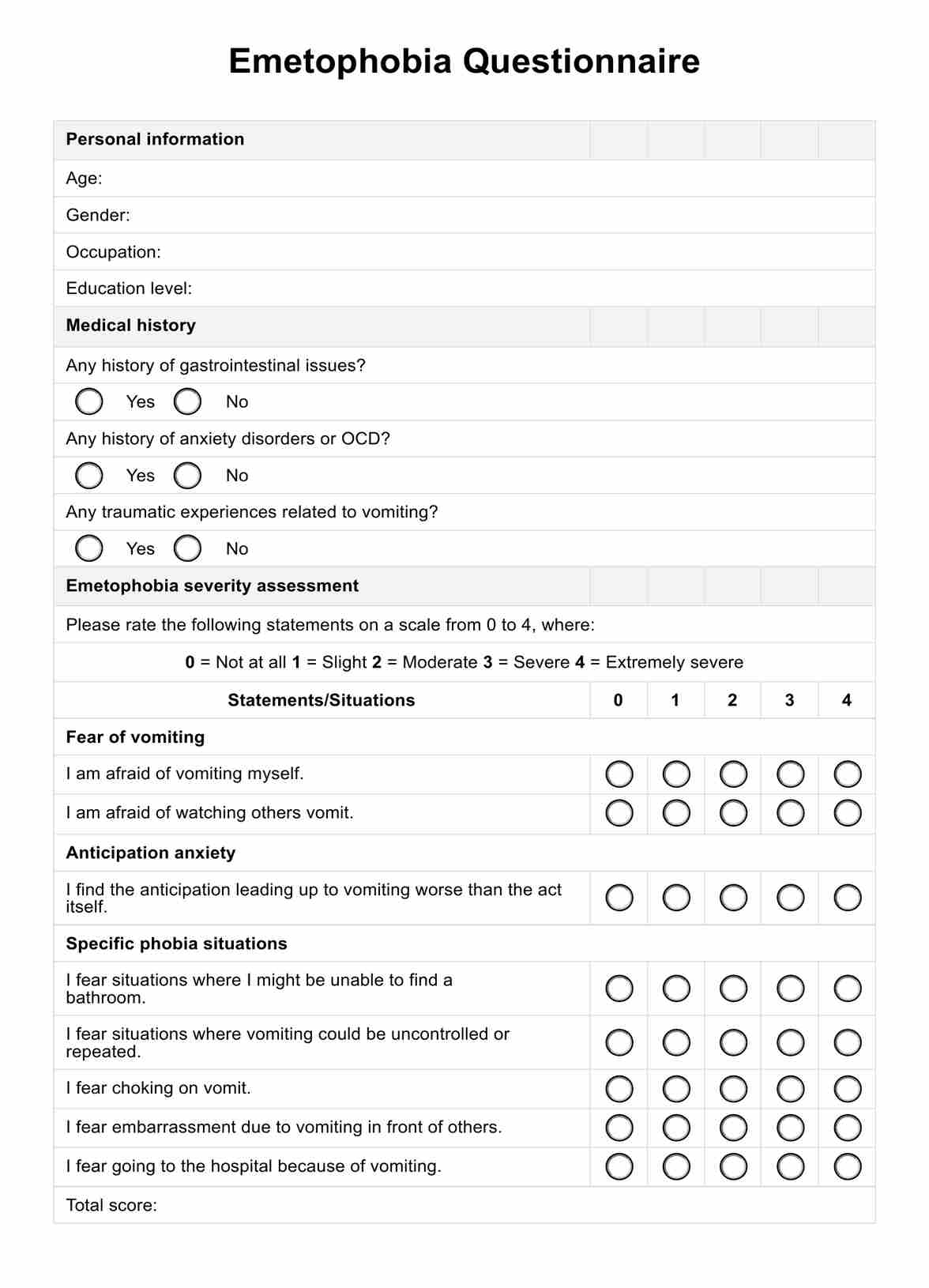
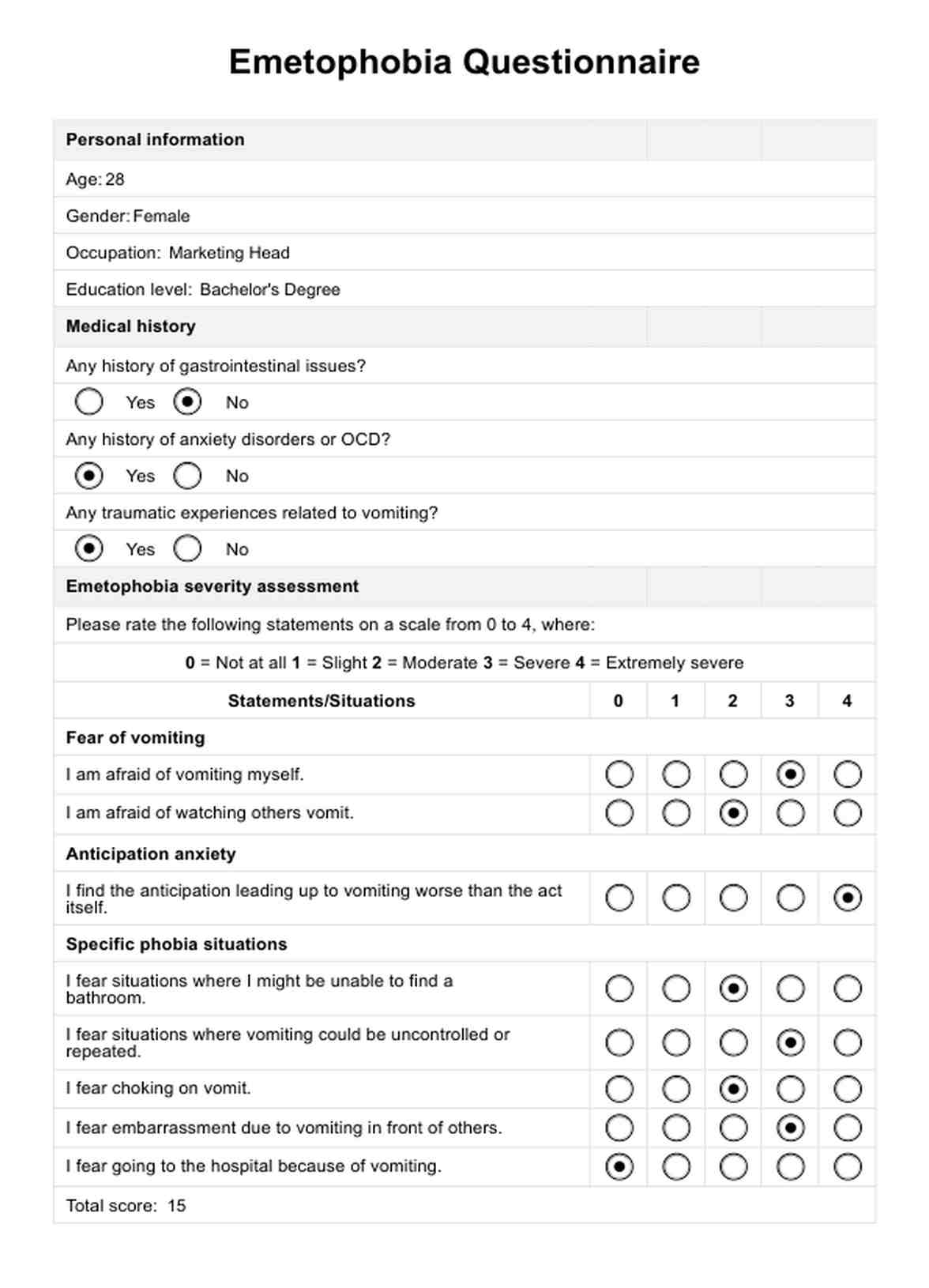



















-template.jpg)
















































































